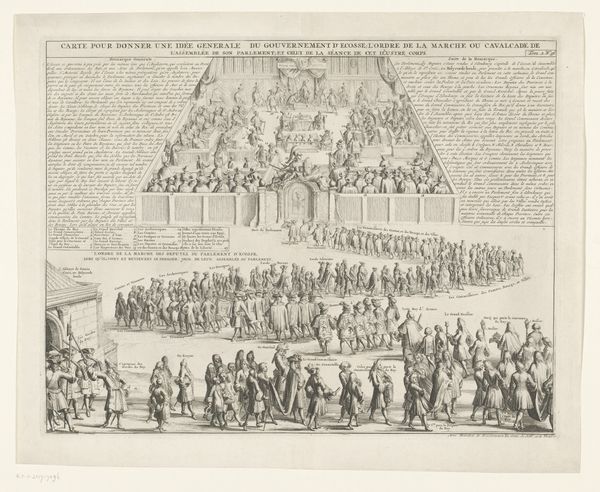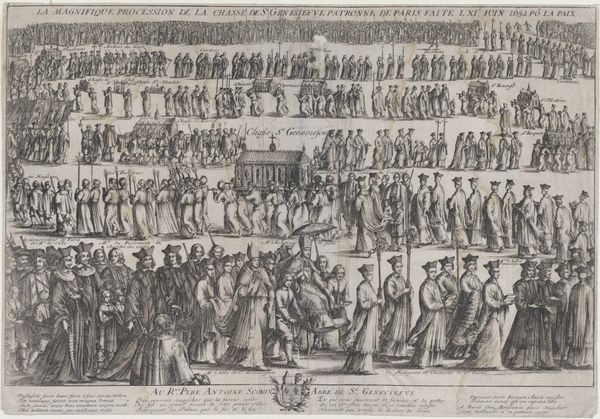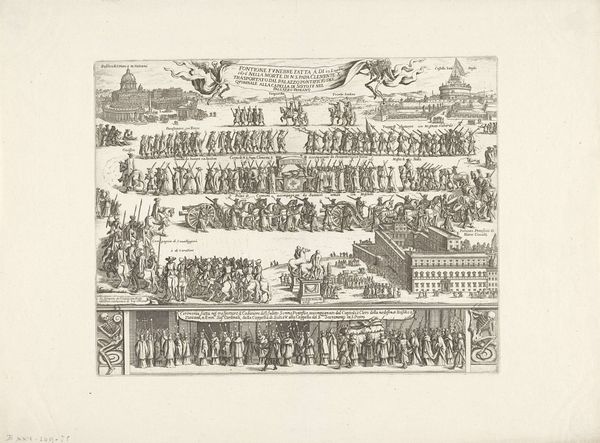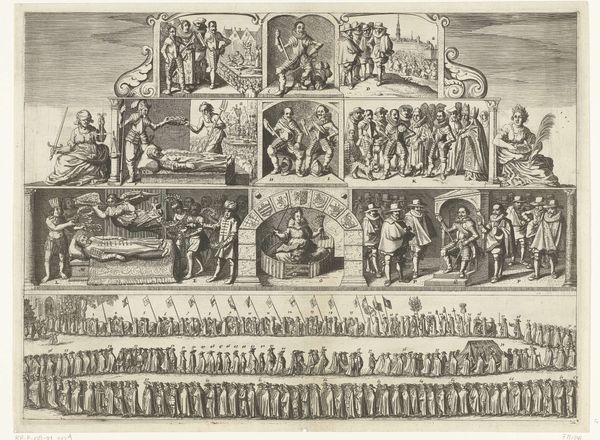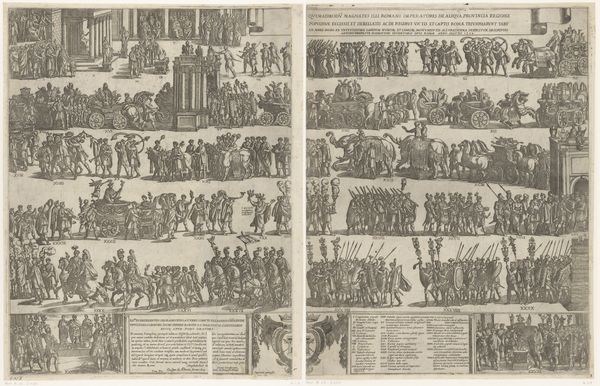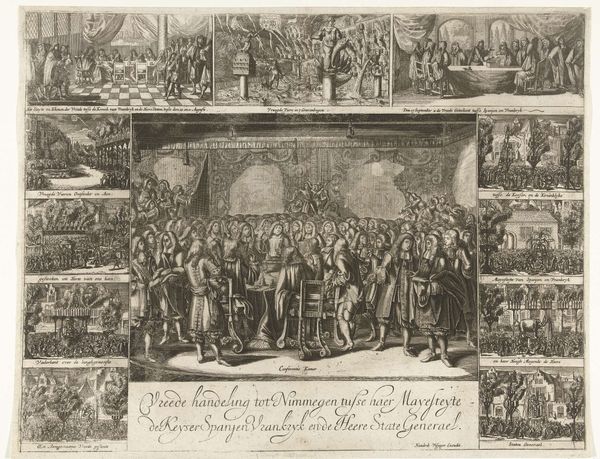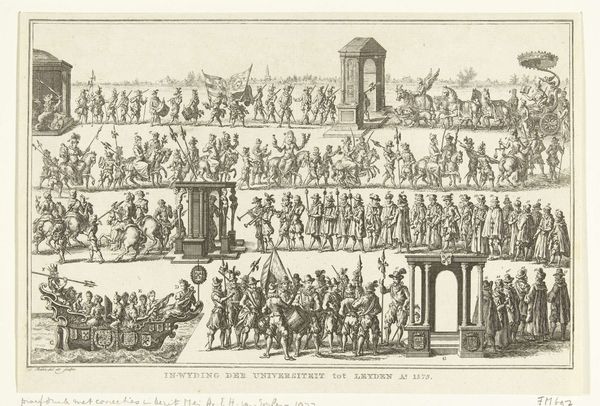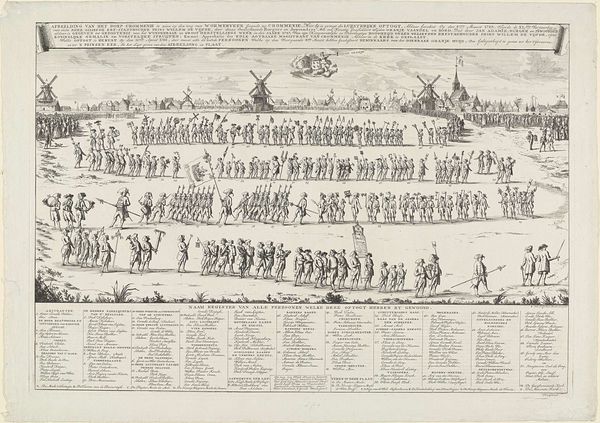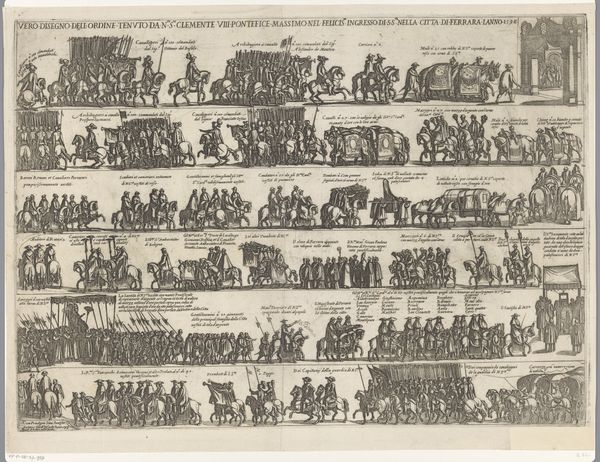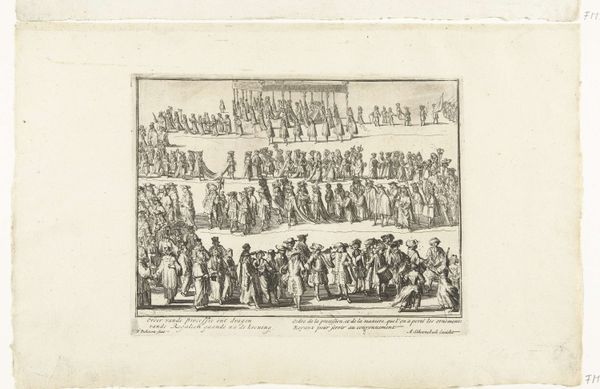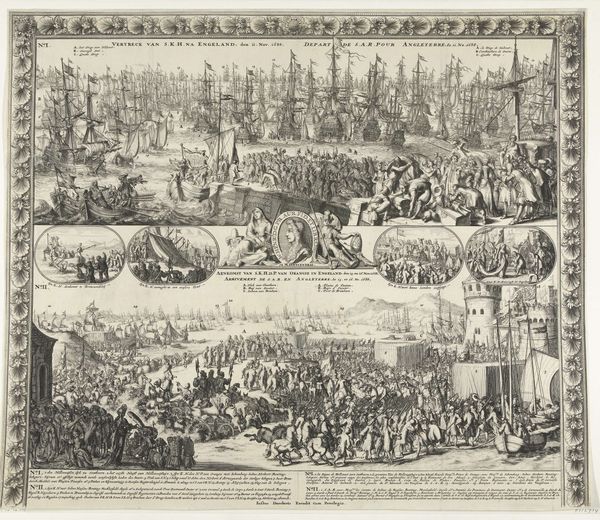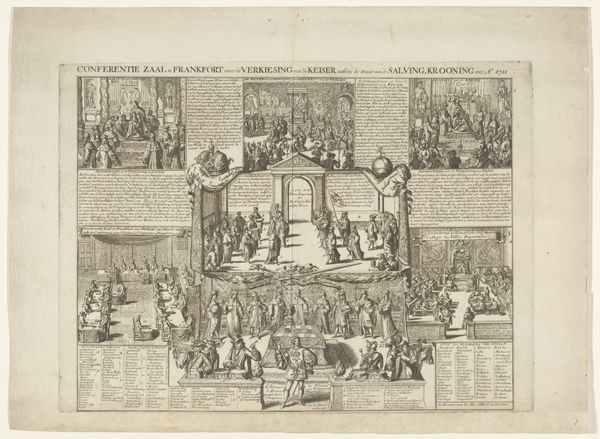
De kroning van Willem en Maria tot koning en koningin van Engeland, 1689 1689
0:00
0:00
romeyndehooghe
Rijksmuseum
print, engraving
#
narrative-art
#
baroque
# print
#
figuration
#
history-painting
#
engraving
Dimensions: height 528 mm, width 627 mm
Copyright: Rijks Museum: Open Domain
Curator: Oh, this is dense! At first glance, it feels like an overwhelming panorama. All the tiny figures remind me of intricate clockwork. Editor: This elaborate print is "The Coronation of William and Mary as King and Queen of England, 1689," created in that very year by Romeyn de Hooghe. You can find it here at the Rijksmuseum. What initially appears chaotic is actually meticulously structured. Curator: Structured how? Is it just me or does the symmetry somehow...worsen the chaos? It’s like forced order on a celebratory mess! Editor: It's more about encapsulating a narrative. De Hooghe was a master of historical allegories. Notice how the coronation unfolds in a series of scenes, almost like a comic strip telling the story? Curator: I do see that, yes. The little scenes leading up to the central coronation. It’s almost a manual on how to crown a king and queen! The symbolism… it's everywhere! The crowns floating overhead, the angels... what does it all signify to you? Editor: For me, these aren’t just arbitrary symbols but echoes of deep-seated cultural beliefs about power and legitimacy. The artist taps into this visual language to solidify the image of William and Mary. He's ensuring their reign is not just a change of guard but a divinely sanctioned transition. Curator: Divinely sanctioned through… careful image management? You know, I see the Baroque flourish here. De Hooghe really maximizes every inch of this print. Editor: Precisely. In Baroque art, excess *is* the message, designed to overwhelm the senses. Each tiny character, each symbolic object reinforces the spectacle of the event and, crucially, the monarchs’ authority. The chaos reflects life itself. Curator: So, it’s less about pure documentation and more about crafting a lasting, monumental image? Editor: Absolutely! And as viewers today, we become inheritors of that constructed memory. We’re peering into not just a historical event, but also the mindset and anxieties surrounding its depiction. What began as a way to show what happened becomes something to ponder. Curator: Right! To me it feels more vital knowing that image lives with us even today.
Comments
No comments
Be the first to comment and join the conversation on the ultimate creative platform.
